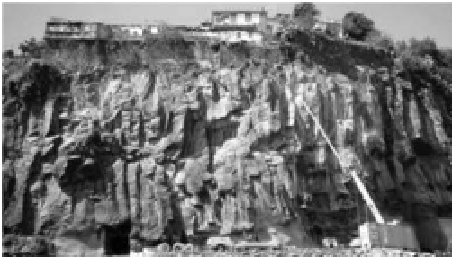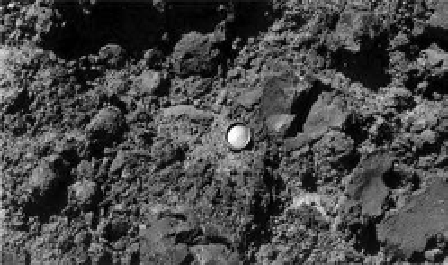Environmental Engineering Reference
In-Depth Information
3
GeoloGical chaRacTeRisaTion
The characterisation of the mechanical proper-
ties of the rock masses is a very important stage in
geotechnical design. This characterisation is made
by considering both geological criteria as well as
mechanical properties (quantified by in-situ and
laboratorial tests).
Volcanic environments, due to their origin,
have a great heterogeneity of rocks and soils,
characterised by different mechanical proper-
ties which usually present random distributions.
however, due to economical limitations, it is not
possible to establish extensive ground investiga-
tions for a better characterisation of the rock
mass.
considering these two issues, the main initial
aim of the design is to conduct the geotechni-
cal investigation towards grouping the rock mass
in geotechnical zones, based on their mechanical
properties, in order to reduce the number of tests
and the number of design parameters, thus simpli-
fying the problem.
The mass is first divided into soils and rocks.
Rocks include as main units: compact basalts, basalts
sometimes vacuolar to moderately weathered, very
weathered to fractured basalts, compact breccias
and slightly weathered breccias and very weath-
ered breccias. soils include tuffs (fine pyroclast)
breccious, granular tuffs, clayey tuffs and coarse
pyroclasts.
Usually in volcanic environments the zoning
might not be very accurate due to the significant
spatial heterogeneity genesis and mechanical
characteristics. however this zoning is imperative
in design stage and so it must be done carefully
and with the knowledge of how each formation
is going to control the global response of the
rock mass. Usually, observations and measure-
ments of the behavior of the structure and its
surrounding ground should be made to identify
any need for remedial measures or adjustments
to the construction procedures defined in the
project.
Figure 4. β
2
alternated and irregular layers of compact
basalts.
Figure 5. β
2
compact breccias.
Figure 6. β
2
moderately weathered tuffs.
Disaggregated and weathered basalts are, in
general, from vacuolar or breccious formations
characterised by some degree of disaggregation
presenting weathering signals along the disconti-
nuities. compact breccias occurr generally from
moderately to very weathered, with moderate to
close fractures. Disaggregated breccias occur from
completely to highly weathered, with very close
Tuffs are less representative and occur from
moderately to highly weathered. sometimes the
compact and disaggregated breccias and the tuffs
4
GeoTechnical chaRacTeRisaTion
after completing the geological characterisation
it is necessary to define the design geotechnical
parameters.
in regard to the rock masses, the mechanical
behavior is assessed by approaches that are based
on the mechanical characterisation of the intact
rock samples combined with geotechnical classi-
fication systems. These approaches aim to deter-
mine the rock mass properties, before and after the
excavation.


















